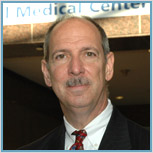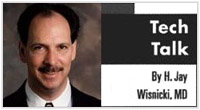 |
||||
|
||||
|
How to use e-mail to facilitate patient communication
Format ideal for routine messages, but watch protocol, confidentialityBy H. Jay Wisnicki, MD Technological advances have made it much easier to keep in touch with patients. Unfortunately, technological advances also have made it much more difficult to get in touch with patients. Voice mail, cell phones, and pagers often mean an endless stream of phone tag messages as you strive to maintain a quality line of communication between your office and your patients. Many physicians are finding that an ideal solution to this dilemma is e-mail. E-mail offers a remedy for communicating with difficult-to-reach patients, while affording the physician the luxury of choosing words more carefully than he or she would on the telephone. And e-mail is, in itself, a written documentation of the correspondence copies of e-mail can be printed and attached to the patient's record. Having said that, using e-mail to communicate with patients requires some guidelines to protect the patient, as well as the physician, from costly errors. E-mail is an ideal medium for such matters as prescription refills, some lab results, appointment reminders, insurance questions, and routine follow-up inquiries. E-mail should not be used for urgent messages. Nor should e-mail be used for communicating information about sensitive and highly confidential subjects. Some e-mail systems allow for fairly simple intercepting of messages sensitive patient information could be among the messages hijacked so use discretion here as you would in any patient communication. When using e-mail to communicate with patients, first make sure you get their informed consent. Provide your patients with a packet including communications guidelines outlining what subjects can be broached via e-mail, security mechanisms in place, a guideline for escalating the correspondence to the phone, and a waiver, relieving your office of any damages related to information loss due to technological failure. Your office, as well, must have some guidelines for e-mail use. First of all, to ensure privacy, use password-protected screen savers on all workstations. Do not take for granted that passers-by will not be able to read notes from a vacant workstation. Always double-check the "To:" field on all e-mail. It is very easy to scroll to a wrong address when using an address book in your e-mail. And remember, one missed keystroke can entirely change who receives the e-mail. Be careful. Never share your patients' e-mail addresses with marketers, family members, or any place that violates confidentiality. In fact, because confidentiality is important, use encryption for messages as it becomes available. Back up your mail at least weekly onto long-term storage. Print out mail and place both your notes to the patient and the patients' e-mails in the appropriate patients' records. This will ensure you have a more permanent record of all correspondence. Remember, a documented paper trail of correspondence is a good hedge against malpractice claims. When negotiating the use of e-mail with patients, you need to focus attention on ensuring there is no miscommunication or misunderstanding. Before sending even one e-mail message, you must make sure both you and the patient are on the same page when it comes to e-mail protocol. Let the patient know whether you will read and answer e-mails or if one of your staff will perform triage on the messages. The patient must know if mail addressed to your private e-mail address will be read by you exclusively, or by one of your office staff. In addition, the patient must understand which other medical personnel will view the message when you consult with others. Establish guidelines for turnaround time. Determine how often your patient checks e-mail and make a note of it. Let the patient know how often your e-mail is checked. Stick with those figures. Establish a maximum turnaround time for responses and stay within those limits. Determine permissible transactions and content. This includes how much medical advice will be dispensed via e-mail, as well as which test results will be sent, records released, prescription information, etc. Subject headers are important. Since many of your patients might be picking up e-mail at work, or at another unsecure site, be discreet in your header the line that tells the world what the e-mail is about. Likewise, provide a list of categorical subject headers to your patients, allowing filtering software to forward that mail to the appropriate location in your office. Consider using a header such as CONFIDENTIAL MEDICAL INFORMATION when sending e-mails to patients. Leave the specifics to the document, not the header. Since many patients' e-mail accounts contain nicknames, partial surnames, or no surnames at all, have them identify themselves in the correspondence through their full name and a patient number, if applicable, in the body of the e-mail. This will help you to eliminate confusion between JohnSmith and JoSmith. Ideally, these points should be documented in writing, signed by yourself and the patient, copied, and placed in the patient's record, with one copy going to the patient. This will help minimize the potential for misunderstanding when it comes to using e-mail appropriately. Sometimes you will need to send out group mailings. Do not use this function as part of a marketing scheme, but use it to communicate important information to your patients, such as new office hours, a new phone number, or new services available. When you are doing a group mailing, use the "blind cc:" function on your e-mail server to keep patients' information confidential. E-mail correspondence with patients can be a real time-saver, or it can be a nightmare. By setting guidelines early and most importantly, sticking to those guidelines you can foster the communication process to serve your patients better. Using it incorrectly will only invite trouble. |
Copyright ©2006 H.J. Wisnicki, MD All Rights Reserved
